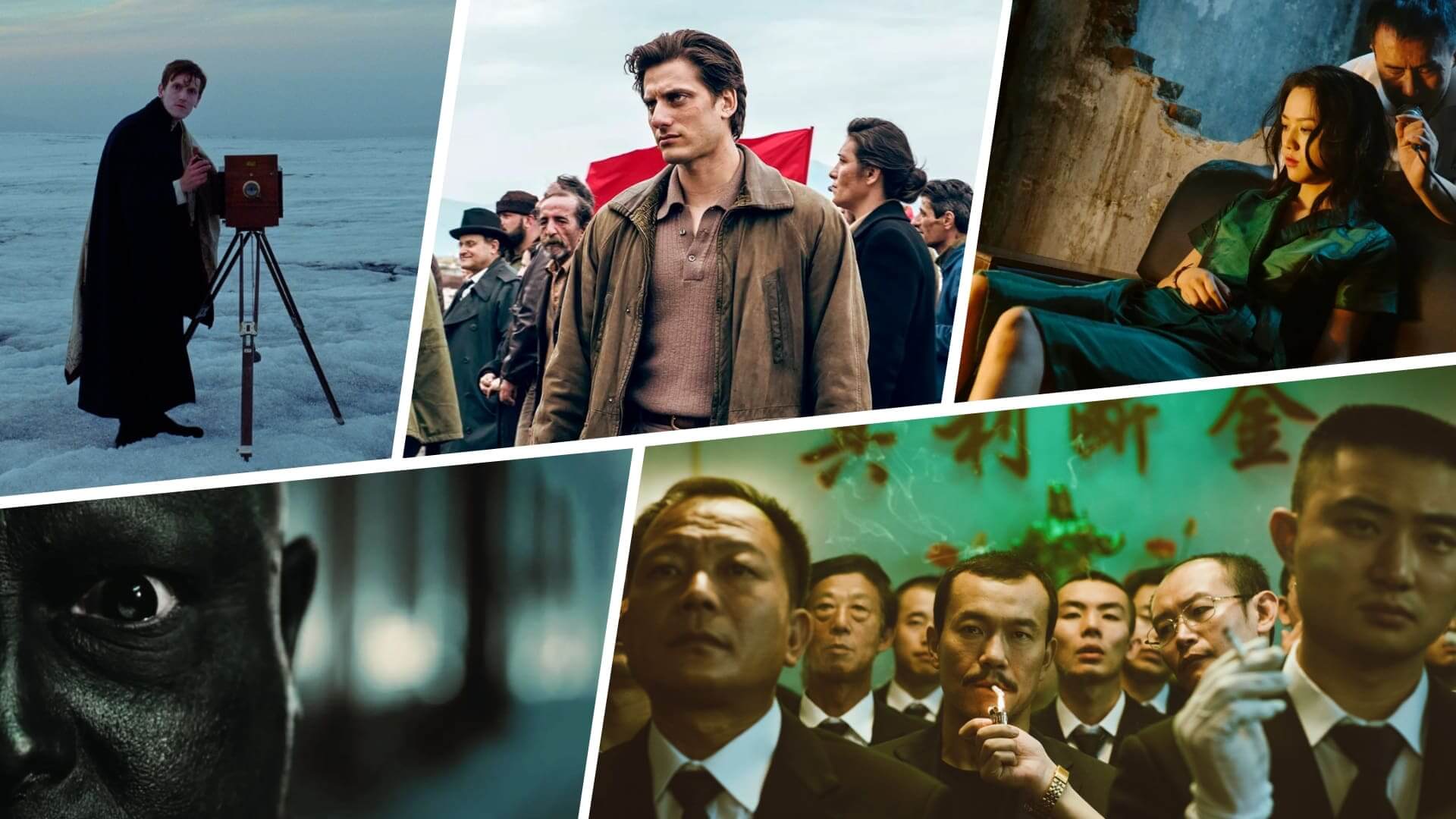H
ave you ever found yourself captivated by a film that strays from the predictable plot lines of mainstream cinema, instead immersing you in a world of unique storytelling and artistic vision? Welcome to the realm of Arthouse Cinema. But what is an ‘arthouse film’ exactly, and how did this fascinating genre originate? Dive with us into the captivating history and defining characteristics of arthouse films, a genre that continues to challenge, inspire, and reshape our understanding of cinema.
What is an Art House Film in Cinema?
First, let’s define arthouse film
As we start this exploration, let's begin by defining art house cinema, a term that will guide our exploration throughout this article.
ARTHOUSE FILM DEFINITION
What is an arthouse film in cinema?
An Arthouse film, also known as art cinema, is a type of movie that strays from the mainstream commercial path to create a unique artistic expression. These films are typically characterized by their serious, often experimental nature, prioritizing directorial creativity and artistic vision over mass-market appeal.
They tend to target niche audiences, offering depth, complexity, and unconventional narrative structures. Arthouse films provide a distinctive perspective, challenging traditional cinematic norms while pushing the boundaries of storytelling and visual aesthetics.
What is an Art House Film Defined By?
- Unique narrative structure
- Artistic vision
- Visual aesthetics
- Targeted niche audience
Origins of Art House Cinema
The history of art house cinema
Art house cinema has a rich and diverse history, with its roots tracing back to various film movements around the world. This section will delve into the pivotal moments and influences that have shaped this unique genre.
Early European Influence
The origins of Arthouse cinema can be traced back to early 20th-century Europe, particularly within French Impressionist Cinema and German Expressionism.
A pivotal example from early 20th-century European cinema is The Cabinet of Dr. Caligari (1920). This German Expressionist film, directed by Robert Wiene, is known for its innovative visual style and narrative that critiques societal conditions, marking a landmark in cinematic history.
The Cabinet of Dr. Caligari (1920)
These movements sought to challenge traditional narrative structures and explore new ways of visually representing reality.
Post-World War II Developments
Post-World War II saw the rise of Italian Neorealism and the French New Wave, both of which had a significant impact on Arthouse cinema. These movements introduced innovative techniques and themes, further pushing the boundaries of conventional storytelling.Breathless: How World War II Changed Cinema
One of the most notable arthouse filmmakers from the Post-World War II era is Federico Fellini, an Italian director celebrated for his distinctive cinematic style. Fellini's films, including renowned works like La Strada, La Dolce Vita, and 8 1/2, are known for their unique blend of reality and fantasy, and their exploration of complex themes like memory and self-identity.

8½ • A pillar of art house cinema
How Martin Scorsese Captures Authenticity — Directing Styles Explained
Modern Arthouse Cinema
Today, arthouse films continue to evolve, incorporating influences from various cultural contexts and film movements. The advent of digital technology and online streaming platforms has made these films more accessible to a global audience, further expanding their reach and influence
Robert Eggers, known for his films The Witch and The Lighthouse, is a notable figure in modern Arthouse Cinema. His works are praised for historical accuracy and atmospheric tension. His recent film The Northman, a Viking saga, blends arthouse aesthetics with mainstream appeal, showcasing his ability to push cinematic boundaries.
The Lighthouse
Directors like Ingmar Bergman, Federico Fellini, Jean-Luc Godard, and others are often associated with arthouse cinema due to their unique storytelling techniques and artistic vision. Today, contemporary directors like Robert Eggers, Sofia Coppola, the Safdie Brothers, and Ari Aster continue the tradition of arthouse filmmaking, pushing the boundaries of cinematic storytelling and visual style.
Through its diverse history, Arthouse cinema has consistently offered an alternative to mainstream cinema, providing a platform for filmmakers to experiment and innovate, and offering audiences a deeper, more complex cinematic experience.

21 Grams
Visual Aesthetics
The visual aesthetics of arthouse films are often innovative and striking. These films prioritize artistic expression over spectacle, using visuals to convey mood, character, and theme.
For instance, Wong Kar-wai's In the Mood for Love is revered for its lush and evocative cinematography that beautifully captures the unspoken longing between its characters.
In the Mood for Love
Unique Storytelling Techniques
Arthouse films are known for employing unique storytelling techniques. This can involve unconventional dialogue, silence, symbolism, or even breaking the fourth wall.
A prime example is Michael Haneke's Funny Games, where characters directly address the audience, challenging conventional viewer expectations.
Target Audience
Arthouse films cater to a niche audience that appreciates complex themes, character-driven narratives, and artistic experimentation. These viewers often seek out films that challenge the status quo and stimulate intellectual discussion. The success of films like Bong Joon-ho's Parasite demonstrates the growing global appetite for art house cinema.Understanding the Art House Genre
Importance of arthouse film
Arthouse films play a significant role in the broader landscape of cinema. They contribute to the film industry, influence mainstream cinema, and promote diversity and creativity.
Contribution to the Film Industry
Arthouse films often serve as platforms for emerging talent in front of and behind the camera. Directors like Quentin Tarantino began their careers making independent films, with one of the best crime movies Reservoir Dogs introducing Tarantino's unique style to the world.
Similarly, Greta Gerwig's transition from indie actress to acclaimed director with Lady Bird illustrates how the arthouse scene can nurture new voices.Behind The Scenes Of Greta Gerwig’s Lady Bird
Influence on Mainstream Cinema
Arthouse films frequently influence mainstream cinema by pushing boundaries and introducing innovative techniques. Christopher Nolan, who started with smaller-budget films like Memento, has brought complex narrative structures to blockbuster movies, evident in films like Inception.
Inception
Role in Promoting Diversity and Creativity
Arthouse cinema promotes diversity and creativity by telling stories from a wide range of perspectives. Filmmakers like Ava DuVernay and Jordan Peele have used the indie film scene to explore racial and social issues, with films like Selma and Get Out respectively.
Get Out
Related Posts
What is an Art House Film in Cinema?
Notable arthouse filmmakers
In the world of arthouse cinema, certain auteur filmmakers have left indelible marks through their unique vision and innovative storytelling techniques. Let's delve into some of these influential individuals and their contributions.
Ingmar Bergman
Known for films like The Seventh Seal and Persona, Bergman's work explores deep existential questions, making significant contributions to cinema's philosophical depth.
Persona
Federico Fellini
His film 8½ is a masterwork of self-reflexive cinema, influencing filmmakers to delve into their own experiences as creative material.
Andrei Tarkovsky
Known for his introspective and metaphysical films like Stalker and Solaris, Tarkovsky's work has greatly influenced the sci-fi genre and the exploration of human consciousness in cinema.

Ingmar Bergman on Andrei Tarkovsky
“Tarkovsky for me is the greatest [director], the one who invented a new language, true to the nature of film, as it captures life as a reflection, life as a dream.”
Wong Kar-wai
Wong Kar-wai is a renowned Hong Kong film director, screenwriter, and producer. He's known for his unique style characterized by nonlinear narratives, atmospheric visuals, and themes of memory, longing, and the passage of time. His most notable films include In the Mood for Love, Chungking Express, and The Grandmaster.
Jean-Luc Godard
A key figure in the French New Wave, Godard's films like Breathless and Contempt revolutionized cinematic conventions, making a lasting impact on narrative structure and visual storytelling in film.
Sofia Coppola
Sofia has made a name for herself with her distinctive cinematic style. Her best films like Lost in Translation and The Virgin Suicides often explore themes of melancholy, fame, and the female experience, offering a fresh perspective in the world of arthouse cinema.Sofia Coppola Directing Style
Jane Campion
This New Zealand filmmaker is best known for her film The Piano, which won her the Palme d'Or at the Cannes Film Festival, making her the first female director to achieve this honor. Her films often explore complex themes of gender, sexuality, and identity, contributing significantly to arthouse cinema's narrative depth.
After recognizing the contributions of these notable auteur filmmakers, it's clear that they have shaped arthouse cinema in significant ways. However, the world of cinema is ever-evolving. As we transition from the past and present into the future, let's explore what might be on the horizon for arthouse cinema.
What is an Art House Film Today?
The future of arthouse films
Arthouse cinema is evolving with the rise of streaming platforms, providing a wider audience for these films and offering a platform for indie filmmakers. There's an increasing focus on social issues and diversity in storytelling, reflecting our changing society. Technological innovations are also being embraced, leading to new cinematic possibilities.
Everything Everywhere All At Once exemplifies how technological advancements have leveled the playing field in filmmaking. Despite being an indie film, it utilizes high-quality visual effects (VFX) and computer-generated imagery (CGI) typically associated with big-budget productions.How a 5-Person Team Made an Oscar-Winning Movie's Effects
There's a resurgence in independent cinema and a continued emphasis on auteur-driven films, indicating a shift in audience preferences towards more thought-provoking content.
Robert Eggers, Ari Aster, Céline Sciamma, Yorgos Lanthimos, Paolo Sorrentino, Sofia Coppola are among the auteur filmmakers pushing the world of arthouse cinema.
For a general idea of the arthouse films, we've collected shots from some of our favorite films using StudioBinder's storyboard creator. Click the image below to explore the collection and you can even download a PDF for future reference and inspiration.
Arthouse Films Mood Board Collection • Click to view the shot list
Arthouse films, with their distinctive storytelling and focus on personal creative vision, are pivotal in fostering diversity, pushing cinematic boundaries, and cultivating a deeper understanding of the human experience.
Up Next
Understanding Auteur Theory in Film
Having explored the realm of arthouse cinema, let's now delve into the concept of auteur theory in film, which further highlights the significance of a director's personal creative vision.
Up Next: Understanding Auteur Theory →
Showcase your vision with elegant shot lists and storyboards.
Create robust and customizable shot lists. Upload images to make storyboards and slideshows.

